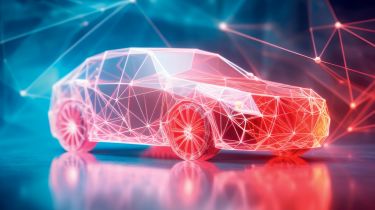Future Car Technology: Innovations Set to Shape the Way We Drive
Automotive technology is advancing at an astonishing pace. Each year brings new gadgets, desirable features, and regulatory changes, completely altering how we interact with our vehicles. With so much new technology available to drivers, it can be challenging to decide what is worth paying attention to. Here’s a rundown of some of the most exciting advancements coming soon.
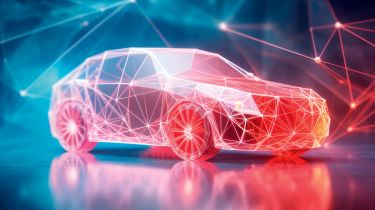
E-Ink
E-ink technology, like the screen on a Kindle, may soon appear on BMW models. It offers low energy consumption and a robust display, perfect for the exterior of future cars. This would allow models to change the color of individual body parts, like the grille, or even entire panels.
Unlike traditional digital displays powered by LEDs or LCD technology, e-ink tech uses an electrophoretic film composed of microcapsules the diameter of a human hair. Each capsule contains positively, negatively, or uncharged particles, which become visible when an electric field is applied.
BMW says this technology is on its way to production vehicles, which could mean its eventual launch on the Neue Klasse models arriving later this year. This could allow drivers to match the car’s color to their mood.
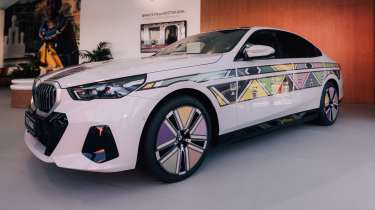
Full-Width HUD
Head-up displays (HUDs) are becoming increasingly common, but Hyundai, with help from German optoelectronics expert Zeiss, is taking the technology further. The company is developing a system that extends the HUD across the base of the car’s windscreen.
This advancement uses Zeiss’s new glass technology, which ensures the image remains sharp, regardless of sunlight or streetlights. This functionality is critical if a head-up display is to replace a traditional instrument cluster. The front passenger will be able to view content from the HUD, potentially displaying information like weather, text messages, or even a film, if large enough.
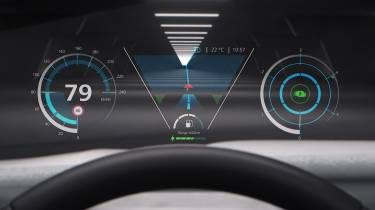
Airless Tyres
Michelin is working to eliminate punctures with its new airless tire technology. While tires have advanced over the last century, the fundamental risk of depressurization remains. Airless tires remove this issue, ensuring a tire can last its entire usable life, leading to cost savings and reduced waste. Michelin’s design uses a complex three-dimensional rubber and fiberglass structure throughout the tire.
The effect on a car’s handling characteristics is still being debated and may involve some compromises. This effort to make the change feel seamless has made the development process long. Michelin’s airless Uptis prototype tire was unveiled in 2017.
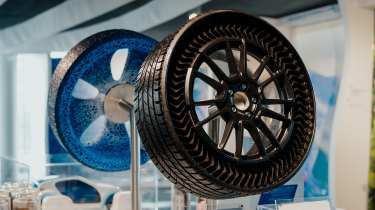
External Displays and Communication Devices
While car manufacturers strive to put as much information as possible at the driver’s fingertips, brands are expanding to how to communicate with those outside and around the car through external displays. Honda has collaborated with Sony on this technology for the front of its yet-to-be-launched Afeela EV.
Called the media bar, it sits between the headlights. Initially, such a system may only be usable when the car is parked as legislation around automotive lighting is strict. However, as legislation relaxes, it could display information on the move, such as sports scores, weather forecasts and traffic conditions.
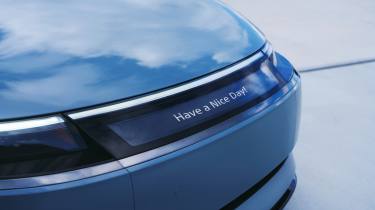
Steer-by-Wire
Steer-by-wire technology, where a physical connection between the steering wheel and the front wheels is removed, is arguably the most transformative future automotive technology. Many manufacturers have tried, but it remains on the verge of introduction due to the extensive development necessary to ensure the system is safe and reliable.
Tesla is the only manufacturer to have implemented it in a production car, while Infiniti briefly offered it with a secondary backup physical rack and pinion. Lexus has revealed its RZ with the technology, though it is still not available for purchase. It allows for greater flexibility in packaging, enabling designers and engineers to place the driver’s seat and steering wheel virtually anywhere.
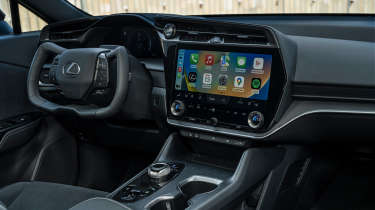
3D Printing
3D printing has been established in various fields but is now making real inroads into the complex manufacturing found in automotive applications. Divergent, a California-based company, is leading the way. Divergent supplies 3D-printed aluminum suspension components to brands such as Bugatti and Czinger.
The benefit of 3D printing is the ability to create the strongest possible components while removing excess material. Computer programs create complex, almost biological-looking components that form key suspension or chassis parts, printed in titanium or aluminum.
Bugatti uses this technology in the suspension of its new Tourbillon, while Czinger has gone further by creating whole sub-frames, wheel carriers, and brake calipers.



